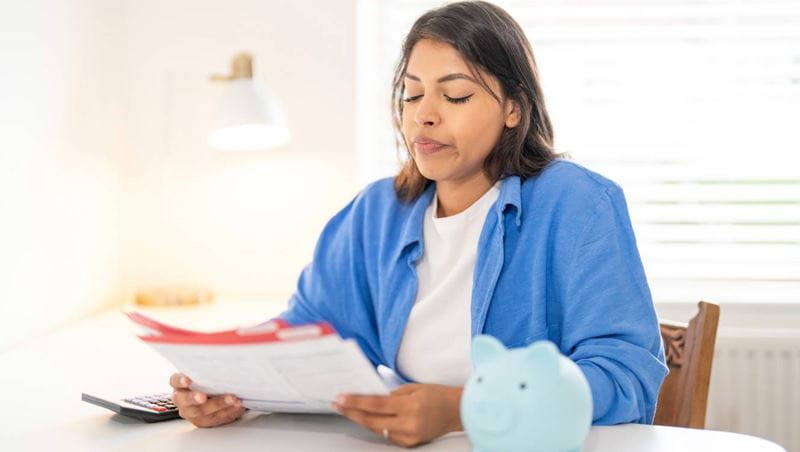
This article is for general guidance only and is not financial or professional advice. Any links are for your own information, and do not constitute any form of recommendation by Saga. You should not solely rely on this information to make any decisions, and consider seeking independent professional advice. All figures and information in this article are correct at the time of publishing, but laws, entitlements, tax treatments and allowances may change in the future.
Gilts are back in favour. These low-risk government bonds are drawing attention from savers who want steady returns, tax advantages and less risk than the stock market. Also known as gilt-edged securities, they’re bonds issued by the UK government.
Gilts are seen as one of the safest types of investment. So, could they be right for you?
What’s on this page?
Gilt lengths vary from a few years to decades, with interest rates set at the outset. They are exempt from capital gains tax (CGT), but interest is subject to income tax if not held in an ISA. Gilt prices can move up or down before the bond’s maturity date.
When you buy one, you’re lending money to the Treasury in return for regular interest payments, known as coupons. Your original investment is returned when the bond matures. They are not zero risk – the government could default on its debt, meaning you lose your initial investment. But that has never happened in the UK.
Ed Monk, associate director at Fidelity International, says there are two ways a gilt can make you money. The first is income from coupon payments (essentially interest) and the second is through a gain at maturity, if the price you paid was less than the initial value.
Gilts pay you a coupon, which you – the owner – receive until the end of the bond’s term. At that point, the government repays the gilt’s initial value – which may be more or less than you originally paid if you bought it on the open market rather than when it was first issued. Monk says: “It means returns can come from interest, capital gain, or both. You need to be confident in working this out and comparing it fairly to what a savings account would pay.”
For example, say you buy a £10,000 10-year-gilt, with a 4% coupon, when the bond is issued. You’d get £400 interest a year for a decade, plus your £10,000 back at maturity. This predictable return makes gilts popular with pension funds.
You could also make money if you sell the gilt for more than you paid before it matures. If you bought the same gilt in the market for £9,500, you’d still receive £400 interest a year. At maturity you’d also make a £500 gain when the government repays the full £10,000 face value.
Laith Khalaf, head of investment analysis at AJ Bell, says gilts could have a place in an investment portfolio if you are seeking low risk. “The market price of your bond will fluctuate, but providing you hold to maturity, and the government doesn’t default, you’ll get your capital back as well as the yield. So they are a relatively safe way of producing income for older investors.”
If you’re seeking low-risk returns, you may also want to consider money market funds.
For years, gilt yields have been low, so not attractive to savers. But times have changed. Interest rates have been rising, and gilts have followed suit. The UK 10-year-gilt yield is currently (at the time of publication) around 4.7%, compared with under 1% in 2020.
Recent stock market volatility has added to the appeal of steady gilt returns. They offer something rare: a government-backed promise to pay a fixed income for a set period.
Rising government borrowing has also meant more gilts being issued, lowering prices and raising yields. But it isn’t just the income that has made gilts popular again. Their tax status is also becoming more valuable to savvy investors.
Sarah Coles, head of personal finance at Hargreaves Lansdown, says: “Part of the appeal is the tax treatment, because there’s no capital gains tax on any profit you make when selling.”
If you’re a higher rate taxpayer who has maxed out your ISA allowance and your personal savings allowance, you’d pay 40% tax on any interest in a savings account. So a 4.5% total return on £10,000 held in a fixed account for three years drops from £1,440 to £864 after 40% tax is deducted.
Coles explains that you could put the money into a gilt paying a low coupon instead. For example, you buy 100 gilts paying 0.125%, maturing in three years and priced at £90 each. The income is tiny (and taxable), but at maturity you will make £10 on each gilt, or £1,000 overall, tax-free. This is because the gain is capital, not income.
“As capital gains tax allowances have been cut and the rate of CGT you pay on stocks and shares has risen, the fact that gilts are free of CGT has become more valuable,” Coles adds.

Gilts are certainly worth considering as an alternative to cash savings, but the right option for you depends on your goals.
Cash savings offer you complete certainty and the ability to access your money easily. You know what return you will make, and your money is protected up to £85,000 by the Financial Services Compensation Scheme (FSCS).
But if the interest you earn on cash savings is less than the rate of inflation, your money’s real value could be shrinking. And you might have to pay tax on your returns if you have used up your annual ISA allowance and if the interest you earn will be above your personal savings allowance.
Monk says: “Gilts pay a return that often compares well against the best cash savings accounts while also offering a near-guarantee that you’ll get your money back. But there are a few things investors need to consider before jumping in.
“If you’re treating gilts as an alternative to cash savings, you need to hold them until maturity. Otherwise, you risk market prices moving against you – and getting back less than you paid.”
Where gilts shine is their tax status. The income is taxable unless you hold them within an ISA or pension, but any capital gain is tax-free.
But the price of a gilt will rise and fall depending on demand in the broader market. If you buy them and sell them again before they mature, the value of the gilt could fall below what you paid for it at the time you choose to sell.
Coles says: “The fact that the price of a gilt moves around means you’re very unlikely to be buying a £100 gilt for £100. You might pay £90 for one and £101 for another.
“In the case of the £101 gilt, if you buy and hold to maturity, you’ll get back less than you put in. However, you might still choose to buy it, because it could offer enough interest along the way to make up for the loss at the end.”
Jason Hollands, managing director at wealth manager Evelyn Partners, says gilts can be an attractive option for:
For those investing outside an ISA or pension, what really matters is the Yield to Maturity, he says. “Gilts may offer low coupons, but offer a strong yield overall where most of the returns at maturity will come from the uplift on purchase price. So the far better choice for a taxpayer is the Yield to Maturity, rather than focusing on the interest coupon.”
For example, a current price of £90 for a gilt on a maturity value of £100, even if it pays a low coupon (interest), such as 0.13%, would be a better choice for someone who might need to pay tax on their savings interest than a gilt offering a higher coupon rate of 4.4% – especially if the current price of the gilt with the higher-coupon rate is close to £100.
These yields can effectively be “locked in” at purchase, whereas interest rates on savings accounts are often variable (and currently heading downwards). Hollands adds: “The risk is extremely low, unless you think the UK government is going to be insolvent over the next two years.”
You can buy gilts straight from the Debt Management Office, via its Computershare service, but you’ll first need to join an Approved Persons register to do this. Or you could use an investment platform such as Hargreaves Lansdown or Interactive Investor.
Other online investment platforms, such as Fidelity or Bestinvest, do not allow you to buy gilts directly. But they offer the option to invest through a diversified government bond fund, which invests in multiple government bonds and potentially also corporate bonds.
Examples of gilt funds include Vanguard’s UK Government Bond Index Fund (VANUGSA) and the iShares Core UK Gilts UCITS ETF (IGLT).
Before buying, check the maturity date, yield and market price. And make sure you factor in any platform fees that will affect your overall returns.


Enjoy the freedom to withdraw your savings at any time.





Discover how stocks and shares ISAs work and how to choose one
.jpg?la=en&h=354&w=616&hash=1254A3F816E81965A47EA68E3AEC9F7A)